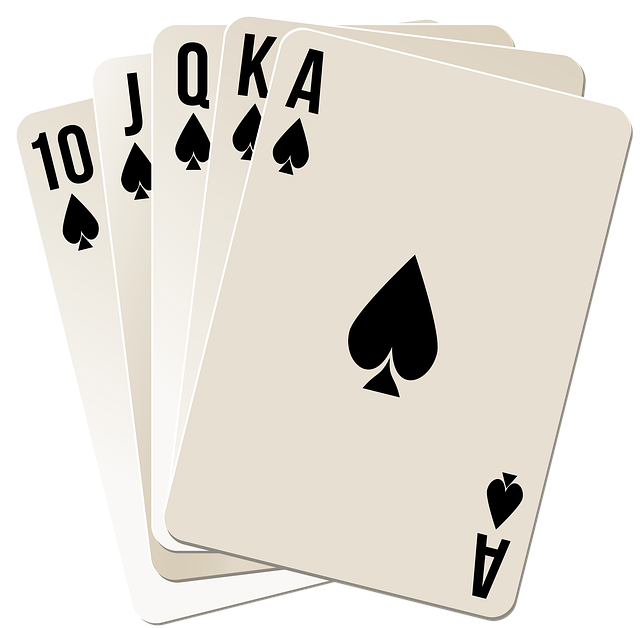Hierarchy Unveiled: A Definitive Guide to Poker Hands Ranking

The Art of Playing with Poker Cards
Poker is a game of strategy, skill, and chance. It is played with a standard deck of 52 cards, and the objective is to have the best hand at the end of each round. To determine the strength of a hand, poker hands are ranked according to specific rules and criteria. Understanding these rankings is crucial for any aspiring poker player.
The Basics of Poker Hands Ranking: A Comprehensive Guide
At its core, poker hands ranking follows a hierarchical structure. The highest-ranking hand is the Royal Flush, which consists of the Ace, King, Queen, Jack, and Ten of the same suit. This is an extremely rare combination and guarantees victory in most cases. Next in line is the Straight Flush, which is any five consecutive cards of the same suit. For example, a hand containing 6, 7, 8, 9, and 10 of hearts would be considered a Straight Flush.
Moving down the hierarchy, we find Four of a Kind. This hand consists of four cards of the same rank, such as four Aces or four Kings. It is important to note that if two players have Four of a Kind, the player with the higher-ranked set of four cards wins. In case of a tie, the fifth card (also known as the kicker) comes into play.
Next up is the Full House, which is a combination of three cards of one rank and two cards of another rank. For instance, having three Queens and two Kings would constitute a Full House. If two players have Full Houses, the player with the higher-ranked three-of-a-kind wins. If both players have the same three-of-a-kind, then the pair determines the winner.
Following the Full House is the Flush, which consists of any five cards of the same suit. The rank of the individual cards within the flush determines its strength. If two players have a flush, the player with the highest-ranking card wins. If both players have the same highest-ranking card, the second-highest card comes into play, and so on.
Moving down the hierarchy, we come to the Straight. A Straight is any five consecutive cards of different suits. For example, a hand containing 4 of hearts, 5 of diamonds, 6 of clubs, 7 of spades, and 8 of hearts would be considered a Straight. If two players have Straights, the player with the highest-ranking card wins.
The next hand in line is Three of a Kind, which consists of three cards of the same rank. In case of a tie, the higher-ranked set of three cards determines the winner. If both players have the same set of three cards, the remaining two cards (kickers) are compared.
Following Three of a Kind is Two Pair, which is exactly what it sounds like – two sets of two cards of the same rank. If two players have Two Pair, the player with the higher-ranked pair wins. If both players have the same highest-ranked pair, then the second pair comes into play. If both pairs are identical, the fifth card determines the winner.
Lastly, we have One Pair, which is a hand consisting of two cards of the same rank. If two players have One Pair, the player with the highest-ranked pair wins. If both players have the same pair, the remaining three cards (kickers) are compared in descending order.
Understanding the hierarchy of poker hands ranking is essential for any aspiring poker player. It allows you to gauge the strength of your hand and make informed decisions during gameplay. By familiarizing yourself with these rankings, you will be well-equipped to navigate the world of poker and increase your chances of success.
Understanding the Different Categories of Poker Hands Ranking
In the world of poker, knowing the ranking of different hands is crucial. It determines who wins the pot and who goes home empty-handed. Whether you’re a beginner or an experienced player, having a solid understanding of the hierarchy of poker hands is essential to your success at the table.
At its core, poker is a game of skill and strategy. While luck plays a role in individual hands, it’s the decisions you make based on the strength of your hand that ultimately determine your success. That’s why understanding the different categories of poker hands ranking is so important.
The first category of poker hands is the high card. This is the lowest-ranking hand in poker and consists of five cards that do not form any other combination. In this case, the highest-ranked card becomes the determining factor. For example, if two players have high card hands, the one with the highest single card wins.
Moving up the ladder, we have the one pair category. As the name suggests, this hand consists of two cards of the same rank, along with three unrelated cards. If multiple players have a pair, the highest-ranking pair wins. If two players have the same pair, then the remaining cards are used as tiebreakers.
Next up is the two pair category. This hand contains two pairs of cards with the same rank, along with one unrelated card. The highest-ranking pair is compared first, followed by the second pair if necessary. If both pairs are identical, then the fifth card becomes the deciding factor.
Following two pair is the three of a kind category. This hand includes three cards of the same rank, along with two unrelated cards. The higher ranked three of a kind wins in a showdown. If two players have the same three of a kind, then the unrelated cards are used as tiebreakers.
Moving further up the ladder, we come to the straight category. A straight is a hand that consists of five consecutive cards, regardless of suit. The highest-ranking card in the straight determines its value. In case of a tie, the pot is split between the players.
The next category is the flush. A flush consists of any five cards of the same suit, not in sequential order. If multiple players have a flush, the highest-ranking card within the flush determines the winner. If two or more players have the same highest-ranking card, the second-highest, third-highest, and so on are used as tiebreakers.
Moving closer to the top, we have the full house category. This hand contains three cards of the same rank and a pair of cards of another rank. In this case, the higher-ranked set of three determines the winner. If two players have the same three of a kind, then the pair becomes the tiebreaker.
Second from the top is the four of a kind category. As the name suggests, this hand includes four cards of the same rank, along with one unrelated card. The player with the higher ranked four of a kind wins. In case of a tie, the fifth card is used as a tiebreaker.
Finally, at the very top of the hierarchy, we have the royal flush. This is the best possible hand in poker and consists of the Ace, King, Queen, Jack, and Ten of the same suit. It’s an unbeatable hand and guarantees victory if you’re lucky enough to hold it.
Understanding the different categories of poker hands ranking is crucial to your success at the table. Knowing which hands outrank others allows you to make better decisions during gameplay. So whether you’re playing for fun or competing professionally, take the time to familiarize yourself with the hierarchy of poker hands – it will undoubtedly improve your game.
Exploring Advanced Strategies for Poker Hands Ranking
Poker is a game of skill, strategy, and chance. One of the fundamental aspects of poker is understanding the hierarchy of poker hands. Knowing how different hands rank in comparison to each other is crucial for making informed decisions during gameplay. In this article, we will explore advanced strategies for poker hands ranking, providing you with a definitive guide to help improve your game.
At the top of the hierarchy sits the royal flush, the most powerful hand in poker. Consisting of an Ace, King, Queen, Jack, and Ten, all of the same suit, it is virtually unbeatable. The royal flush is incredibly rare, but if you are lucky enough to have one, victory is almost guaranteed.
Next in line is the straight flush. This hand consists of five consecutive cards of the same suit, such as 6-7-8-9-10 of hearts. Like the royal flush, the straight flush is also highly coveted and difficult to obtain. It ranks just below the royal flush but above all other combinations.
Following the straight flush is the four of a kind, which comprises four cards of the same rank, accompanied by any fifth card. For example, having four Aces with a King would give you a four of a kind. This hand is formidable and often leads to significant wins.
The full house comes next on the hierarchy. It involves three cards of the same rank and a pair of another rank. For instance, having three Queens and two Kings would constitute a full house. This hand provides a strong advantage over lower-ranking combinations.
Moving down the ladder, we come across the flush. This hand consists of five cards of the same suit that are not in sequential order. If you have five spades, regardless of their numerical value, you have a flush. Although not as powerful as higher-ranking hands, a flush can still lead to victories, especially against weaker combinations.
Next up is the straight. A straight consists of five cards in sequential order, regardless of their suit. For example, having a hand with 3-4-5-6-7 would give you a straight. This hand can be beaten by higher-ranking combinations, but it still holds significant value during gameplay.
Moving further down, we find the three of a kind. As the name suggests, this hand consists of three cards of the same rank and two unrelated cards. Having three Jacks accompanied by a Queen and a King would give you a three of a kind. While not as strong as higher-ranking hands, a three of a kind can still lead to victories if played strategically.
The next hand on the hierarchy is the two pair. This combination involves two pairs of cards of the same rank, along with any fifth card. For example, having two Kings, two Queens, and an Ace would constitute a two pair. Although not as powerful as higher-ranking hands, a two pair can still win against weaker combinations.
Finally, at the bottom of the hierarchy, we have the one pair. This hand consists of two cards of the same rank, accompanied by three unrelated cards. For instance, having two eights with a King, Queen, and Ace would give you a one pair. While not particularly strong, a one pair can still secure wins in certain situations.
Understanding the hierarchy of poker hands is essential for making informed decisions during gameplay. By knowing which hands are stronger than others, you can better assess your chances of winning and adjust your strategy accordingly. Remember that practice and experience are key to mastering poker hands ranking, so keep playing and refining your skills. Good luck!
Common Mistakes to Avoid When Evaluating Poker Hands Ranking
When it comes to playing poker, understanding the ranking of hands is crucial. It determines who wins the pot and who goes home empty-handed. However, many players make common mistakes when evaluating poker hands ranking, which can be detrimental to their overall success at the table. In this section, we will explore some of these mistakes and provide you with tips on how to avoid them.
One of the most prevalent mistakes that players make is overvaluing high cards. While having a high card may seem like a strong hand, it is essential to remember that poker is not just about individual cards but rather the combination of cards in your hand. A pair of twos can easily beat an ace if played correctly. Therefore, it is crucial to consider the strength of your entire hand rather than relying solely on high-ranking cards.
Another mistake that players often fall victim to is failing to consider the possibility of a straight or flush. These hands can be extremely powerful and should not be overlooked. Novice players tend to focus solely on pairs and three-of-a-kind combinations, neglecting the potential for a straight or flush. Remember, a straight or flush can trump a pair or even two pairs, so always be aware of the possibilities on the board.
Furthermore, players sometimes forget to take into account the community cards when evaluating their hand. The community cards can greatly impact the strength of your hand and should not be ignored. For example, if you have a pair of kings in your hand, but there are three spades on the board, someone holding two spades has a higher chance of making a flush. Always keep an eye on the community cards and adjust your evaluation accordingly.
Another critical aspect that players often overlook is position. Your position at the table can significantly influence the value of your hand. Being one of the last players to act gives you more information about what other players may have. This knowledge can help you make better decisions and avoid overvaluing or undervaluing your hand. Therefore, always consider your position when evaluating the strength of your hand.
Additionally, players sometimes fall into the trap of chasing after a specific hand without considering the odds. While it can be tempting to hold onto a hand in hopes of making a straight or flush, it is crucial to assess the probability of achieving that hand. If the odds are stacked against you, it may be wiser to fold and cut your losses rather than wasting chips on a long shot. Remember, poker is a game of skill and strategy, not luck alone.
In conclusion, understanding the ranking of poker hands is essential for success at the table. By avoiding common mistakes such as overvaluing high cards, neglecting straights and flushes, disregarding community cards, ignoring position, and failing to consider the odds, you can improve your overall evaluation of hands. Keep these tips in mind, practice regularly, and watch your poker skills soar to new heights.





